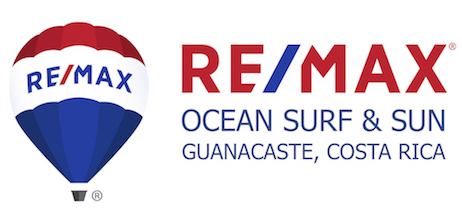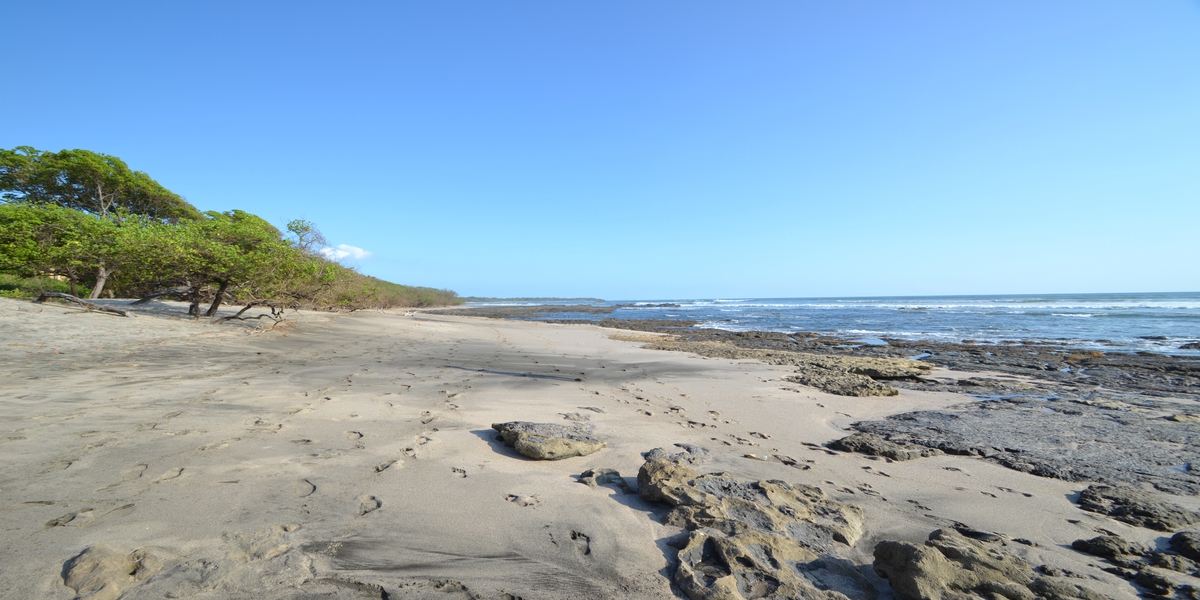Costa Rica's higher-end property market continues to grow rapidly as foreign homebuyers flock in. Due to the absence of official house price statistics, it is hard to assess the exact movements of house prices, but the trend is clear. Costa Rica's property market is highly dependent on the U.S. economy, which represents the highest number of foreign homebuyers in the territory. As the U.S. heads up, so do we.
Despite this, land prices have not yet recovered from the crisis. A half-acre plot is currently priced at around US$150,000, far from its price of US$400,000 in 2008. The most expensive and fastest-selling properties in Costa Rica are in the Central Valley, the greater metropolitan area (including San José, Alajuela, Heredia and Escazú) where most businesses are, and the Pacific coast. The least expensive properties can be found in new developments in the Costa Rica’s southern region, such as the Osa Peninsula.
In San Jose, the country’s capital, the average listing price of houses increased slightly by 0.4% to US$1,131 per square meter (sq. m.) in August 2015 from the same period last year, according to Encuentra 24. On the other hand, condominium listing prices in San Jose were almost unchanged from a year earlier, at an average of US$1,623 per sq.m.
Popular investment locations currently experiencing dramatic increase in demand include Playa Tamarindo, Playa Langosta, Playa Grande, Drake Bay, Santa Teresa and Mal Pais, Montezuma, Puerto Viejo, and Nosara and Playa Guiones. Waterfront properties in these areas are priced from just US$100,000.
- In Santa Ana, a 3-bedroom single family home currently costs about US$212,000
- In Ojochal, a similar property might cost around US$265,000.
- In Tamarindo, 3-bedroom houses are priced at US$375,000.
Gated communities and condominiums are particularly popular among expats and foreign homebuyers. "In the last three years, 80% of sales in Costa Rica were at $200,000 and upward,” said Michael Klein of San Ramon Properties. Costa Rica has proven attractive to investors for its relatively open investment and trade policies, as well as for being the most politically stable country in Latin America. Sales activity started to rise in 2013, when property sales transactions increased 14% from a year earlier. Property demand has been robust since then. Gross rental yields in some parts of Costa Rica are moderately good, ranging from 6% to 8%, according to local property experts. Costa Rica’s property market is expected to remain vibrant during the remaining months of 2015, according to local property experts.
Foreign investors buoy the housing market
US buyers are driving up property demand in Costa Rica. Higher median prices in the USA are now driving buyer interest in higher priced and luxury real estate properties, particularly for ocean view, beachfront, and near beach properties. Buyers from hot markets in the USA like California and Florida see Costa Rica as offering great value in comparison to similar beach real estate in the United States. We still have luxury condos for under $200 per square foot, pricing that is rare in the USA.
Aside from its scenic beauty and lower cost of living, many Costa Ricans, foreign investors and High Net Worth Individuals (HNWIs) are increasing being attracted to invest in the property market mainly because foreigners are entitled to the same ownership rights as Costa Rican citizens and there are no property taxes and no residency restrictions. Where else in the world can foreigners come to a country with no soldiers, a government that caters to investors and fee-simple real estate with no restrictions and where foreigners are entitled to the same ownership rights as Costa Rican citizens.
Visitor arrivals continue to rise. During the first half of 2015, the total number of tourist arrivals by air to Costa Rica increased 4.4% from the same period last year, to reach 987,801 visitors, according to the Costa Rican Tourism Board. Tourism revenues reached about US$1 billion in H1 2015, up by around US$161 million from a year earlier. Tourist arrivals averaged 2.3 million people from 2010 to 2014. Americans accounts for about 40% of all visitor arrivals in Costa Rica every year.
Moderate-to-good yields
Gross rental yields on residential property in Costa Rica are moderately good, ranging from 6% to 7.8%, based on Global Property Guide research.
Smaller-sized residential properties typically yield better returns. In Alajuela and Heredia, rental yields range from 5.8% for larger-sized houses to 6.9% for smaller houses. On the other hand, in San Jose, the rental yields for smaller houses and condos are almost 8%, and around 6% to 7% for larger properties. Costa Rica’s rental market is covered by Law 7527 (General Law on Urban and Suburban Renting), passed in 1995. According to the law, rents quoted in colon cannot be increased by more than 15% unless inflation is beyond 15% - which it never has been since the law passed - while rents quoted in US dollars or any other currency cannot be increased at all. What is most unusual about this law is that, in practice, it favours quoting rents in US dollars, since the colon generally depreciates, making foreign-currency denominated rents rise faster than rents quoted in colons.
The real estate boom continues in Guanacaste
The housing boom in Guanacaste continues, with the average listing price of houses skyrocketing by almost 35% y-o-y to US$1,497 per sq. m. in August 2015, according to encuentra24.com. Likewise, prices of beachfront homes and lots also increased almost 20% to an average of US$2,600 per sq.m. over the same period.
For years, Guanacaste was a wild woolly territory, hard to get to, the domain of backpackers and surfers who appreciated its climate and stunning beaches. Then Guanacaste took off. The real estate boom in Guanacaste began after the opening of the Daniel Oduber international airport in 2002 (which is located in Liberia) and the opening of the Four Seasons resort, part of the 2,300-acre (9.3 sq. km.) US$400 million Península Papagayo project developed by the Costa Rican developer Alan Kelso, indisputably the most luxurious development on the coast. In then, several luxurious hotels have been built in the area.
Another catalyst was the start of direct flights from Atlanta, Miami and Houston in 2005. Planes fly into the small airport at Liberia, the capital of Guanacaste. Some of the most luxurious and high-priced properties are available here, though there is a wide range of condominiums in Guanacaste on a price range from $100,000 to $750,000, depending on location. Guanacaste also boasts several world-class golf courses, including the Hacienda Pinilla Golf Resort at the southern part of Tamarindo, and the Garra de Leon course at The Paradisus Playa Conchal Resort. The Four Seasons Resort, the Royal Pacific Golf and Country Club in Playa Grande, the Tamarindo Diria Beach and Golf Resort in Tamarindo and the Costa Palmera Beach Estate in Playa Grande also offer popular golf getaways in the province of Guanacaste.
Tamarindo, the biggest coastal town in Guanacaste, is a hit among tourists, especially surfers. It has the most developed tourist infrastructure in Guanacaste. Due to its popularity, Tamarindo property prices have risen, and average homes and condominiums sell at prices ranging from $200,000 to $700,000. The area’s promoters have taken to calling it the new Gold Coast. Guanacaste is low in humidity and has just two seasons- the Green Season, May to November when there are morning or afternoon showers that clear to provide spectacular sunsets, and the High Season, with beautiful sunny days from November to May.
Affordable new houses in Central Valley
The Central Valley has a temperate climate suitable for year-round living, and has easy access to San Jose, the country’s capital.
San Jose is admittedly rather ugly, but it is the country’s economic and cultural centre. Its population dropped to 60,000 people from around 70,000 people, 20 years ago. To attract people back, San Jose’s local authorities pushed projects to develop Paseo Colón, a downtown revamp, building parks, improving water and drainage systems, and improving traffic management. In addition, the construction of the US$1.3 million “Chinatown” project, covering 8,300 sq. m., was completed in 2012.
Half-hour away from the capital are the mountains of Heredia to the north, Alajuela to the northwest and Cartago to the east, which offer small-town charm. The warm climate on the hills of Escazú, west of San José, is another favourite with North American expatriates.
Central Valley has the highest number of developments underway, especially in places such as San José, Alajuela and Heredia, according to The Association of Engineers and Architects. In fact the pre-crisis construction boom has made houses more affordable. Buyers can have a decent house for as low as US$50,000 up to US$250,000 in Tico neighborhoods. Low-end condominiums sell at a minimum amount of US$150,000 in Ezcazú and Santa Ana. The eastern part of San Jose had seen a construction boom in recent years.
Costa Rica’s last frontier is the Osa peninsula area, which is very rural, not easily accessible, with a small airport and terrible roads. It is also much more tropical, an area known for its heat and mosquitoes and snakes.
Beautiful, unspoiled beaches
Caribbean beaches
Caribbean beaches, especially those near the Panamanian border, are some of the most beautiful and unspoiled in the country and they are seeing enormous price increases.
Rental occupancy rates at Jaco beach were boosted when the new San Jose to Caldera highway became accessible. The highway was completed in early 2010, reducing the travel time from San Jose (and the Central Valley area) to around 1 hour, according to Reveal Real Estate. Some of Costa Rica’s stunning beaches include the following:
Playa Conchal
Playa Conchal, in the Province of Guanacaste, boasts stunning white sand beaches, perfect for swimming and snorkeling. Visitors enjoy deep sea fishing excursions and hiking trips to the nearby national parks or nature reserves. Visitors can stay at the luxurious Westin Playa Conchal Resort.
Manuel Antonio
Manuel Antonio, on Costa Rica’s central pacific coast, is one of country’s most beautiful beaches with sparkling white sand, calm water, rich wildlife, and lush rainforest landscape. Visitors can enjoy a wide range of activities such as swimming, surfing, and hiking the Manuel Antonio National Park, among others.
Playa Flamingo
Playa Flamingo is a mile-long, crescent shaped beach north of Playa Conchal. Mangroves are abundant in the area, and Salinas Point offers a perfect view of both the Potrero and Brasilito Bays. Popular activities include scuba diving, sailing, and sportfishing. Playa Flamingo is home to exclusive beachfront private properties and expensive villas. The overall vibe is upscale and relaxed.
Tamarindo
Tamarindo is the country’s surf and party destination. It is in Nicoya Peninsula on the northern pacific coast of Costa Rica. It hosts several international surf competitions. Other activities include sport fishing, scuba diving, snorkeling, swimming, and horseback riding.
Punta Uva
Punta Uva, a small town south of Puerto Viejo, offers quiet, clean and beautiful beaches. In addition, visitors can also enjoy its beautiful butterfly garden full of various species of exotic butterflies. There are also indigenous community reserves, home to the tribes of Bri-Bri, Cabecar, and KeköLdi, and the Yorkin.
Low interest rates
The base interest rate has been falling since the beginning of this year, reaching 6.55% in September 23, 2015, down from 7.2% in January 2015, according to the Banco Central de Costa Rica (BCCR). The BCCR cut its benchmark interest rate by 50 basis points to 3% in July 2015, taking advantage of tamed inflation to buoy economic growth. This was the lowest level in almost 9 years and the sixth rate cut this year.
In July 2015, the average interest rate on colon-denominated housing loans stood at 12.9%, slightly up from 12.61% from a year earlier, according to the BCCR. On the other hand, the average interest rate on U.S. dollar-denominated housing loans was 8.21% in July 2015, down from 8.47% a year ago.
Mortgage market expanding rapidly
From 3.47% of GDP in 2000, the size of the Costa Rican mortgage market expanded to 12.54% of GDP in 2014. From 2001 to 2008, the amount of housing loans outstanding grew by an average of 36% per year. However after the global crisis mortgage growth somewhat slowed. In 2014, housing loans increased 13% from a year earlier. In May 2015, total housing loans outstanding rose by 7.94% y-o-y to CRC3.46 trillion (US$6.49 billion), based on figures from the BCCR. The average amount of loan for a house and lot purchase per customer amounted to US$46,694, according to the Superintendent of Financial Institutions.
Solidarity tax helps owners
Rental property owners welcomed a new “solidarity tax” in October 2009, which changed the tax rules for homeowners and tenants.
Under the “solidarity tax” taxpayers can choose between two taxing options:
- Pay 15% tax on rental income (income from rent only), with the taxpayer entitled to 15% deductible expenses without documentation;
- Pay taxes the traditional way, with all deductible expenses subtracted and corresponding rates applied. Under the old rules, the taxpayer was allowed to subtract deductible expenses (e.g. depreciation), but must pay income tax at up to 30%. Smaller and medium companies pay income taxes ranging from 10% to 20%, and individuals who receive rental income pay 10% to 25% tax.
The solidarity tax, also known as the luxury home tax, applies only to owners of houses whose price exceeds CRC117 million (US$234,000). Owners of houses with lower appraisal value are exempt from paying it.
COSTA RICA’S LUXURY HOME TAX TABLE |
||
| Property Appraised Value | Rate | |
| Up to | CRC291 million | 0.25% |
| On excess of CRC291 million | and up to CRC584 million | 0.30% |
| On excess of CRC584 million | and up to CRC875 million | 0.35% |
| On excess of CRC875 million | and up to CRC1.167 million | 0.40% |
| On excess of CRC1.167 million | and up to CRC1.458 million | 0.45% |
| On excess of CRC1.458 million | and up to CRC1.752 million | 0.50% |
| On excess of CRC1.752 million | 0.55% | |
Widening fiscal deficit is a concern
Costa Rica´s economy is projected to expand by 3.8% in 2015, after 3.5% growth in 2014, 3.4% in 2013, 5.2% in 2012, 4.5% in 2011, and 5% in 2010, according to the International Monetary Fund (IMF).
Costa Rica had robust economic growth from 2003 to 2007, with annual average real growth of 6.7%, according to the IMF. However, the economy grew just 2.7% in 2008 and contracted by 1% in 2009, due to the global crisis. Costa Rica now faces growing fiscal deficits. The country’s deficit stood at 6.4% this year, up from 6% in 2014, 5.4% in 2013, and 4.4% in 2012. Costa Rica’s fiscal deficit is expected to reach 6.9% of GDP in 2016.
As the country struggles to rein in widening deficits, Moody’s Investors Service cut Costa Rica’s credit rating to junk status last year. Earlier, Costa Rica had already been rated junk by Standard & Poor’s and Fitch Ratings. The country’s total debt is equivalent to 49% of GDP in 2015, up from 40% in 2014 and 25% in 2008.
The current account deficit remained steady at 4.7% of GDP in 2014, from 5% in 2013, 5.3% in 2012, 5.4% in 2011, and 3.5% in 2010, according to the IMF. During the second quarter of 2015, unemployment stood at 9.5%, up from 9.1% in a year earlier, according to the Instituto Nacional de Estadística y Censos de Costa Rica (INEC).
In August 2015, consumer prices in Costa Rica dropped 0.74% from a year earlier, the second consecutive month of falling prices and in sharp contrast with an inflation of 4.39% in December 2014. This allowed the central bank to cut its policy interest rate to a record low of 3% in July 2015. In August 2015, the average monthly exchange rate stood at US$1=535 colones. The Costa Rican colon (CRC) was revalued in 2010, from US$1=557 colones to US$1=493 colones. Since then the US dollar has gradually appreciated against the colon.
In January 2015, the BCCR abandoned its nine-year-old currency band system and instead adopted a managed float exchange rate regime which established a range of 500 to 800 colones per USD1. The central bank vowed to intervene only when the currency shows excessive fluctuations.
Article - March 2016






